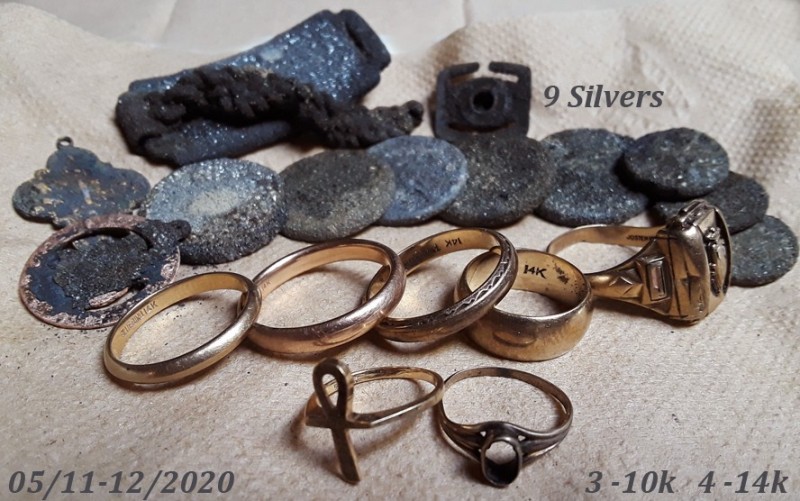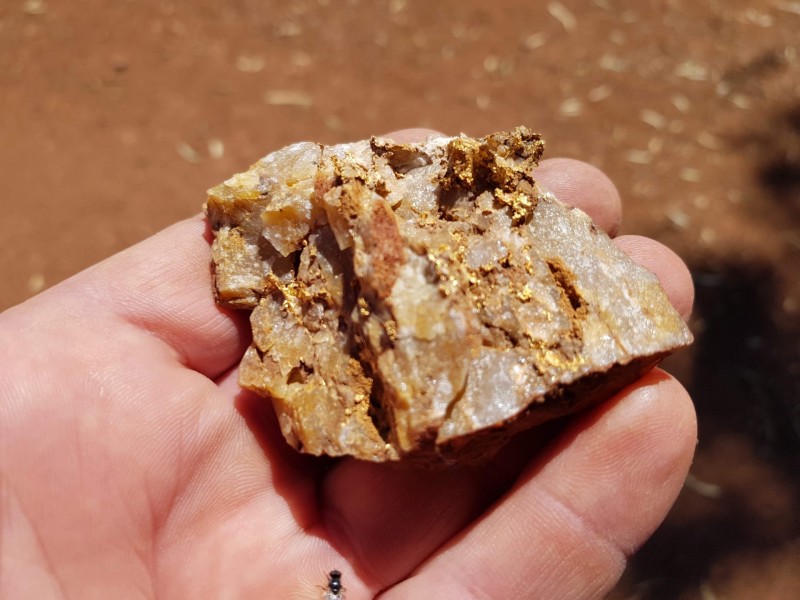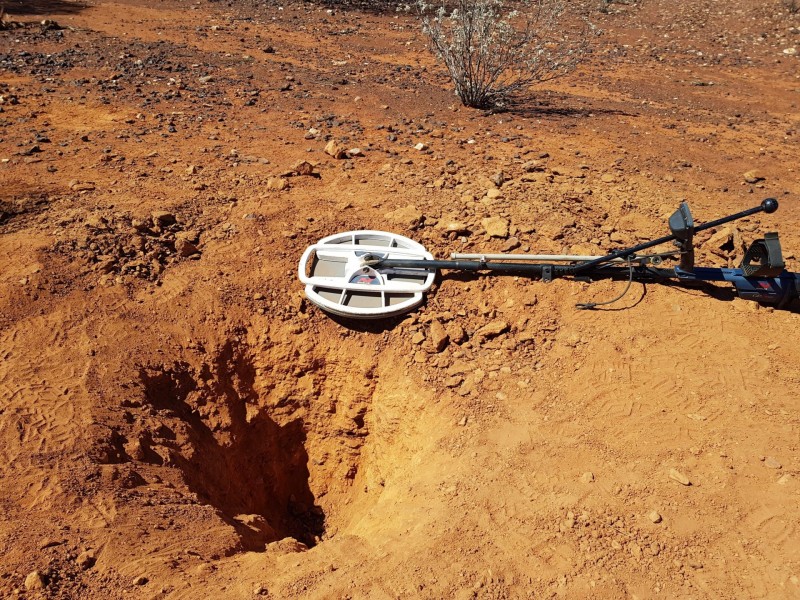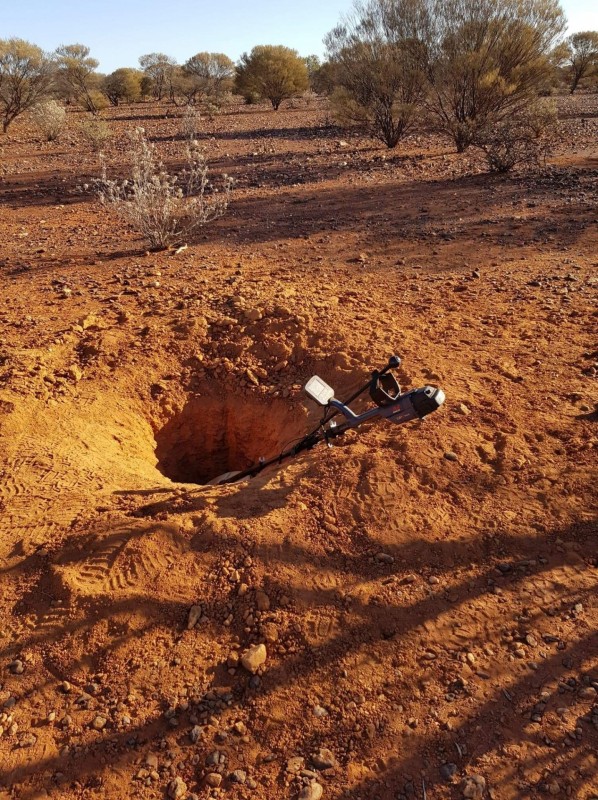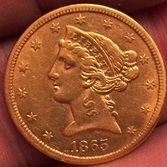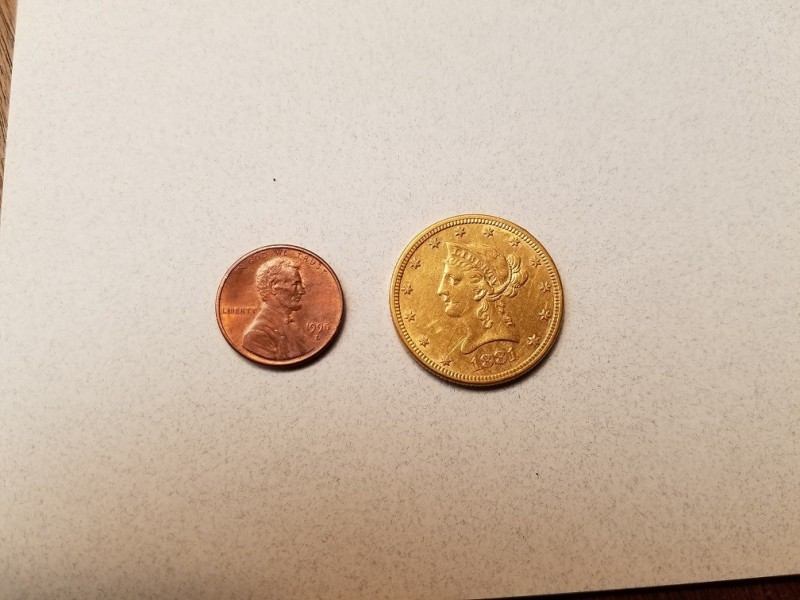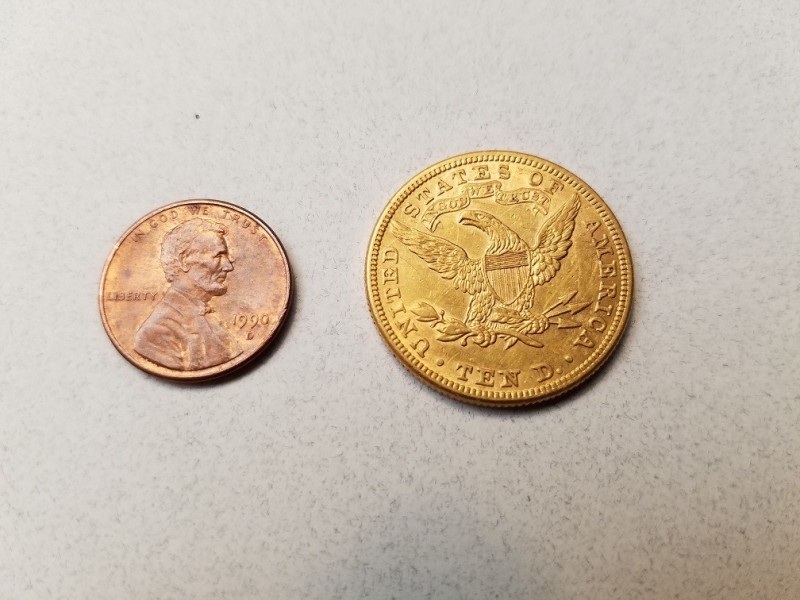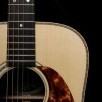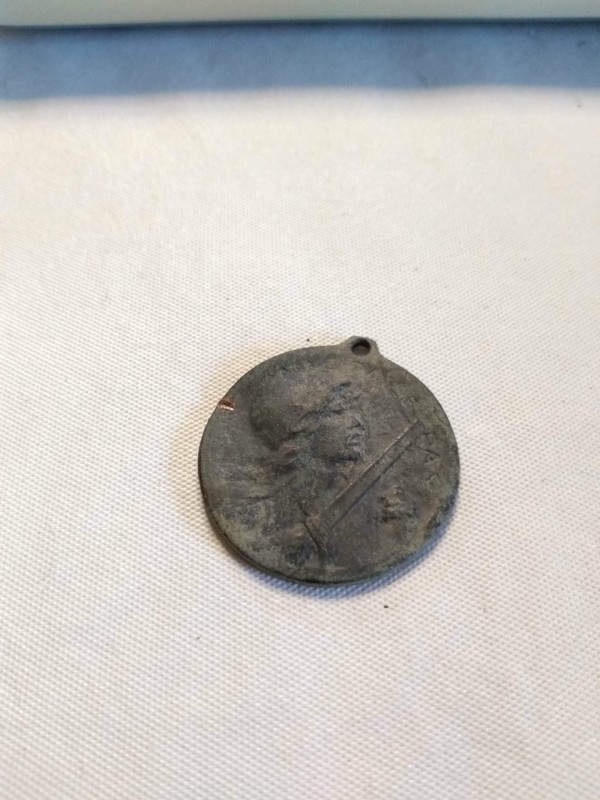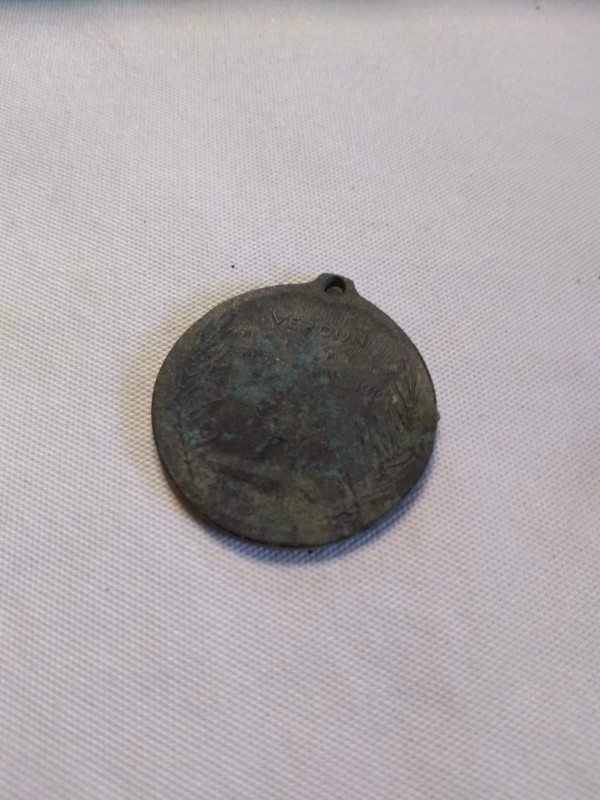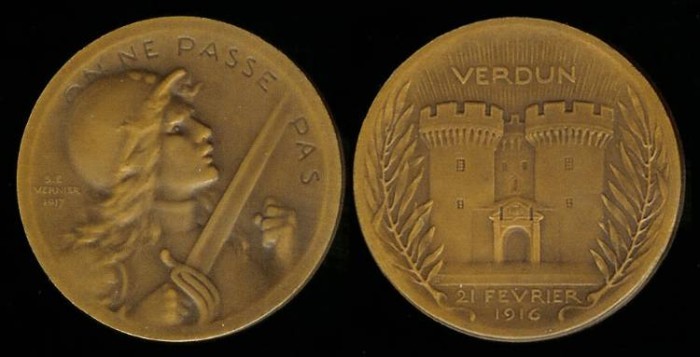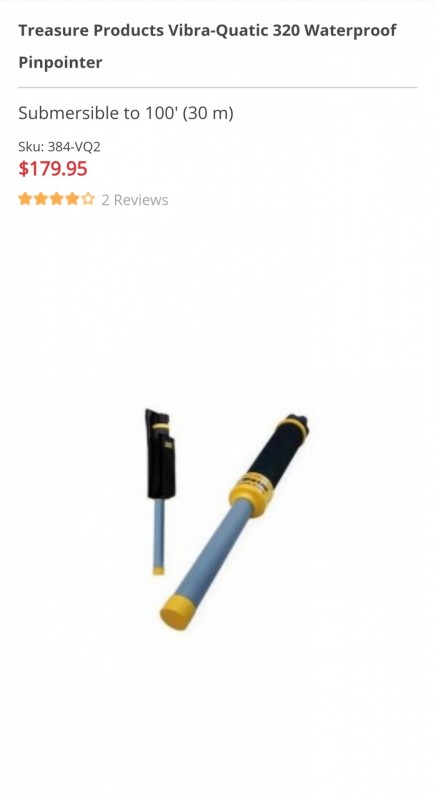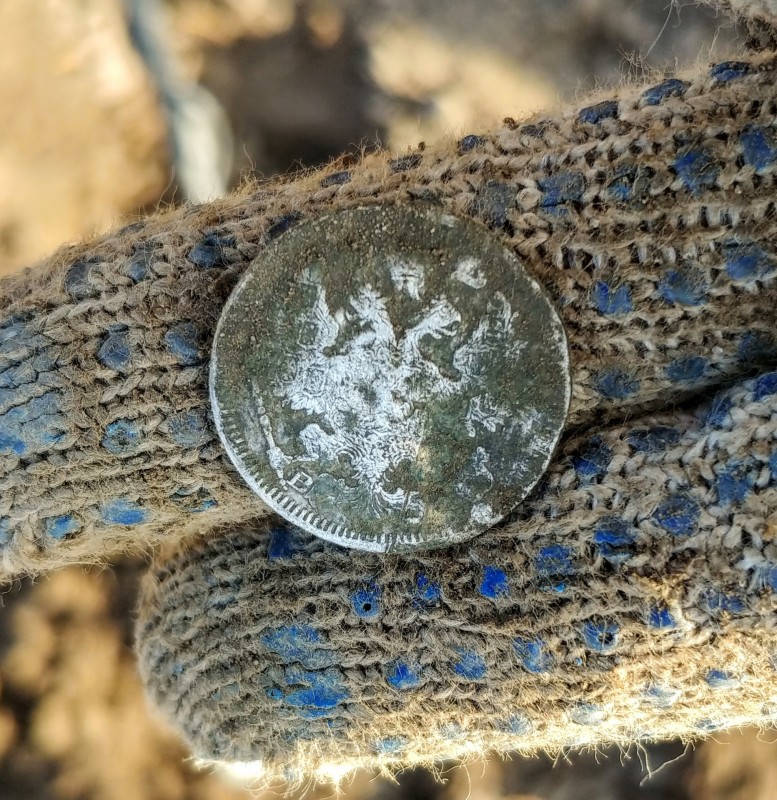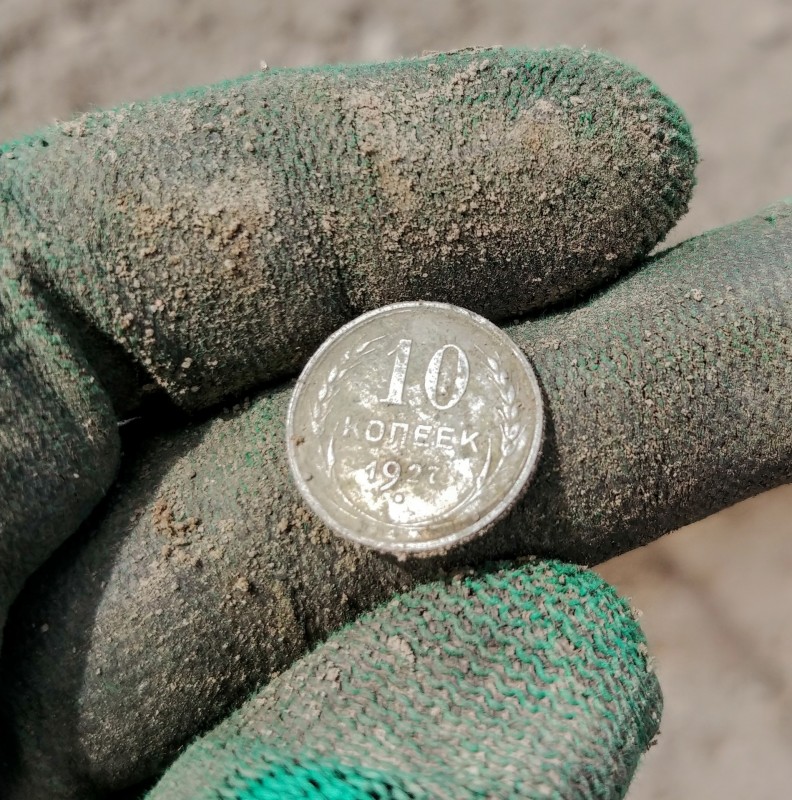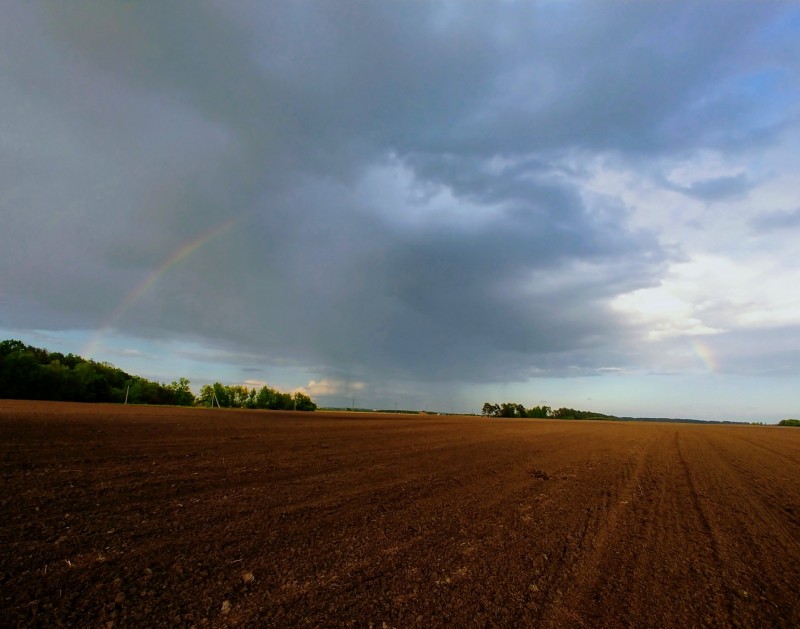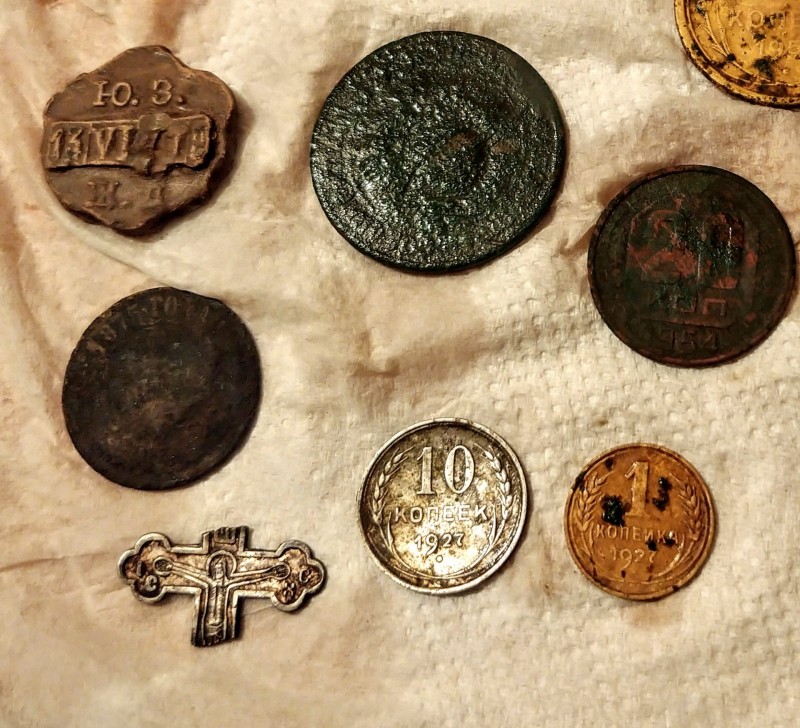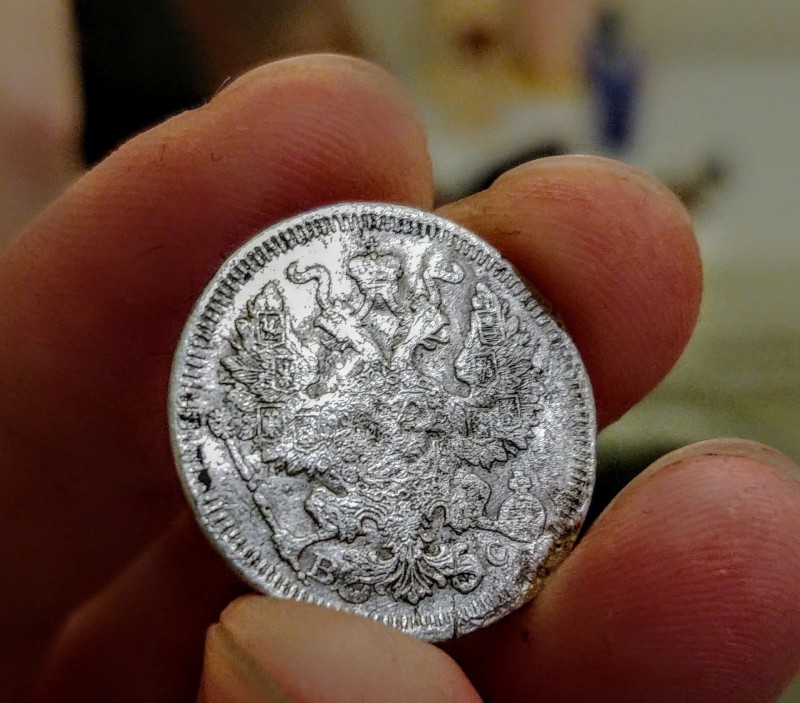Leaderboard
Popular Content
Showing content with the highest reputation on 05/22/2020 in all areas
-
So the other day my neighbor told me she lost part of her rosary when she was walking her dog. It was a multitude of events where her phone rang, kids ran out and the dog kind of pulled off enough that when she took her hand out of her pocket fast, it broke and flew across the grass near the sidewalk. She was able to find most of it but could not find the a piece that had a little cross on it with part of the chain and beads. This rosary really meant a lot to her. My neighbors know that I metal detect for gold but they did not ask me at first and tried themselves to find it, even going to point of borrowing a metal detector from their relatives. When they came back empty handed and I saw them in the driveway they told me the story. I said you should have just asked me, I would love to help! Plus for me I thought that this would be like leveling up in metal detecting skill set. I only hunt for jewelry when I go to FL to visit my folks, so I only get in maybe a few weeks of that. Plus I rarely detect in the parks, I just don't like all the people. So I wanted to know if I could really do this. So I asked her to show me some of the other parts of her rosary so I could get hear what the signal sounded like, what kind of ID number would show up, and how much sensitivity to use since it should be a surface find (it was only lost for a couple of days). Well I knew this was going to be a challenge cause the little cross came up around 15 and the chain was ferrous, I think it was a -4 all on the Equinox. I was not sure if the cross and the chain were still connected. Well when I got to the area she lost it, there was so much trash and EMI plus I could not discriminate because I was not sure if they were still connected or not, but i persevered. Knowing that I would not have to dig, helped eliminate a lot of targets too. Anyways it only took me about 20 mins and I found it! The cross was still connected to the chain, and when the signal came up it was a double blip of those exact numbers! I looked down and there it was. She was so excited and thankful and I was just as excited for her and knowing that I could do it! It was an absolute great feeling to help her out, I felt on top of the world at that moment. I would even say I felt a bigger high finding that for her vs when I find a nugget! Anyways here the pic.7 points
-
Yeah, it’s basically heading that way, especially here in the U.S. If gold was still $300 an ounce we’d already be done. People who say they are doing it for fun and adventure, not the value, for some reason are not out looking for things of no value instead. They could be looking for copper nuggets but few seem interested in that for some reason, even though it is as challenging and has just as much fun and adventure as gold detecting. The price does matter, and ever increasing prices have kept this ship afloat. And if gold breaks above $US2000 an ounce I expect we will see another electronic gold rush as people detect for the last remaining dribs and drabs on patches pounded for decades. Yes, there are virgin patches out there, but it’s the rare true prospectors out spending the weeks or months of non-producing detecting needed to find them. Ultimately it is legal access to ground that is the limit, and if gold prices spike everything available will get claimed up to the hilt. Competition will be fierce again. We lose even if we win. I feel like I missed the real heyday 20 years ago being busy running my business. But I am grateful I got to do what I did when I did near the end of it all, and see some virgin patches myself, and lots of large gold. The GPZ really did light things up, but now even the GPZ gold is getting sparse. I’m afraid I’m one of those spoiled old guys finding it hard to get motivated to go out and detect for a few grams. Beach detecting is more pleasant and with better viewing, and more what I’m inclined to do these days.5 points
-
Either you misunderstood the veteran detector user you talked to or they have a bone to pick with a certain type of detector. Most hobby VLF detectors are single frequency. Depending on their quality they may be able to very slightly change frequencies in order to prevent crosstalk with other detectors. Only a few VLF detectors have the ability to selectively change from one detecting frequency to another like the XP Deus, XP ORX and some of the Nokta Makro detectors. A very few detectors also have the ability to operate with simultaneous multiple frequencies. Depending on if your soil has high mineralization conditions or if you detect saltwater beaches, a simultaneous multiple frequency detector may be the only VLF detector that will work well. In very mild to moderately mild dirt you won't see much difference between a good quality single frequency detector and a good quality simultaneous multi frequency detector for shallow to medium depth targets. On the deeper targets (past 6 to 8") the simultaneous multi frequency detector may out perform the single frequency detector as far as identification of the target is concerned. So, simultaneous multi frequency detectors work very well where many other detectors fail miserably. That is not hype or some kind of marketing ploy, it is a well known fact. Jeff5 points
-
I have read this response in your posts before and on many detectors with or without displays that strategy works very well. On some simultaneous multi frequency VLF detectors being hype or not, which is the topic of this thread, visual target IDs are very accurately accompanied by very accurate multiple tone ID capabilities. On the Equinox specifically, I hunt first by tone ID and use the numerical target IDs to support what I hear. I don't know anyone who uses an Equinox (that knows what they are doing) that has their eyes glued to the screen. They don't need to especially in 5 or 50 tones. Jeff4 points
-
I am holding off on announcing anything definite because Fisher has yet to send me full details. My unit is now - as I said - being used by a serious and respected beach hunter. He is very busy and his work product will be posted in due course. We intend to produce short, to the point videos, each demonstrating key performance capabilities and characteristics of the AQ. For now, I will give you a couple of snippets from his recent reports...all direct quotes... “I'm in Love...Two hours...submerged...no problems.” “...figured out PP on deep targets also..very easy...I'll explain better once I get a chance to show in a video..works perfect on deeper targets..” “I got one gold ring, one silver, and a war nickel..” “I want to get back out there ASAP..Love it..” The "AQ" is not for every beach but in the right spots it can wake a dead beach up... “...most of the targets I got today were in the range of 16 to 20 plus inchs easy.” “Thank You for the "AQ" ....A Master Piece!” "AQ" was very silent, with 8.5 delay and salt water. “ “The target (US Nickel) was about 20 inchs,” “By days end I was telling myself I need a pull handle on my scoop to help lift out of the deep holes.” ”I've used a just about every water Pi made in the lasted 20 years, one thing I disliked on everyone, noise. .............The "AQ" is a very silent running PI machine... allows one to hear the faint signals in All metal.”3 points
-
3 points
-
Yes, single frequency is already at the limits of what more power can offer before it is counterproductive. Multifrequency is not, which is why you see that as a sales pitch for single frequency. I do think we are a long way still from what sophisticated signal processing can achieve with multifrequency.3 points
-
Just an example of where multifrequency can still go. Right now you will hear it said that when a detector uses single frequency, all the power is focused on that one frequency, which can give slightly better results on that frequencies preferred target class over multifrequency. This is because multifrequency spreads the power out over the frequency range, with each frequency therefore running slight less than full power. It is the compromise of running all frequencies versus a single frequency. However, with that single frequency you are focused on a single class of targets, and will do less well on the other frequency ranges than the multifrequency unit. But it does not have to be that way. That is mostly a function of battery power and the desire to keep power use within tolerable ranges. With new high power battery technology, the next step will be multifrequency where each frequency is optimized and running at full power equivalent to what you get running at a single frequency only. I expect we will see this development in the relatively near future. I want to emphasize again that Equinox is not the be all end all of multifrequency. In fact CTX has better target id resolution and excellent ferrous handling that is arguably better than the Equinox. From my perspective the Equinox is just a crude proof of concept for Multi-IQ, with more benefits still to come. It should be fairly obvious that everything Minelab knows about FBS and has learned so far about Multi-IQ will be going into the next generation CTX model.3 points
-
I just got an email about a Garrett survey, aside from what the type of hunting is done, you are also asked what are the qualities you would like in a detector and coil types. It seems what they want the opinion of future buyers. https://garrett.com/metal-detector-survey3 points
-
Looks like Garrett Marketing Team is willing to listen to what detectorists actually want in a detector instead of what they think we want. Maybe they learned something from Nokta/Makro.....................3 points
-
Go through all that clad, look for some the transitional years and in particular 83 copper pennies. If you have one of those you may get yourself a nice car rather than an Amazon gift card 🙂 I saved out all my 82 copper pennies as those where the last year they were made. End of the run they changed over to zinc and the following year a few copper 83's snuck through. Other stuff to look for are miss strikes or double strikes, wheaties, war nickels and of course rosies.3 points
-
A Thermacell works wonders on them "birds"!! (Walmart or online) I'm in South Florida so i can relate! The heat🥵 bothers me more! And "detector legs" should be a medical term! After my biggest one day coin haul ever! ( i think it was 243)! I could hardly walk for days afterward!🤣😂👍👍3 points
-
2 points
-
Not been out in a while since the lock down but things are starting to ease..A Little. Had some good winds Monday and Tuesday so I got wet both days. Mondays hunt one 1944 Class ring then a small young ladies 10k ring. Tuesday rocked with 4 14k wedding bands and 1 10k and several silvers. Silver needs cleaned .......Year to date totals.... 46 Gold rings and 46 Silvers... Good Luck to everyone and be safe..2 points
-
For Reg, I was flat out picking this up.🤪 Yes I’m a dealer🤕 The GPZ 19 is heavy but so are the larger X coils, not as bad but still hard on the arm and the ears.😬There’s a lot of wire in all of them.🙉 Years ago Coiltek made a 24” Round DD, it was a monster at 2kg with no lower shaft, many many people swung those coils to very good effect especially in Victoria chasing lumps. Never once saw anyone call them Dog’s.🧐 I did very well with mine with the biggest a 20 ounce piece in the Pilbara. BTW Australia is actually a bigger market than the US for ML gold machines. JP2 points
-
No argument here as I also found the vanquish 540 to be a lot of fun to use, with both coils, and the 5X8 DD is an excellent general-purpose coil for most places, including those with low-to-modest amounts of annoying Iron debris. And it is powerful, as well, providing very nice audio in the excellent ML-80 headphones. I also preferred it to the EQ-800 and this is a nice complement to my other performance=proven models. Monte2 points
-
So, to return to the original question, those who do not detect in areas where there is moderate to high mineralization/saltwater conditions may not see any benefit from one of the current simultaneous multi frequency detectors, i.e. the Equinox on shallow to medium depth targets like the example kac gave concerning a 6" large cent co-located with iron. That makes sense to me. However, whenever anyone tells me I just don't know what my single frequency detector is really telling me, I just want to throw up. I wish I had soil conditions like that to hunt in. In my soil conditions that dividing line between a single frequency detector running at high transmit gain versus the Equinox is 3 to 4". Past that depth, absolutely any single frequency detector has zero reliability as far as multiple tone ID or numerical target ID accuracy. Every target past that depth becomes an extremely high conductor or an iron target so the entire low to mid conductor target accuracy is completely gone. So, a single tone beep and dig detector with good ground balance capabilities, no display, an 11" DD or so coil and ample transmit/receive power running above 14kHz would do just as well. So, I have two choices, use and learn my single frequency detector's minute nuances and interrogate the target for several seconds (or more) along with do some mental math (do I add or subtract 20 to 40 target ID numbers to what I think the target is and take a chance????). Or, do I use a more appropriate simultaneous multi frequency detector for my soil conditions, spend less time analyzing targets and dig many more quality targets which are accurately identified with appropriate tones and numbers down to at least 11" or more? I took my G2+ yesterday for a short hunt in an aluminum trash filled local park. I am not a big fan of the discrimination mode on the G2+ because of its tone choices. Basically it is a 2 tone detector in discrimination mode depending on if and where I set the V-Break and iron volume. I basically just wanted to cherry pick copper pennies, dimes and quarters so I set the tone break between low tone and VCO tone pretty high (80), just above zinc pennies and only dug VCO tone targets. I dug so many zinc pennies, 4" deep pull tabs and a couple of US nickels that it was extremely frustrating. I dug plenty of dimes and quarters too but that up averaging is just not fun. I still love the Tek G2+/F19/Time Ranger Pro form factor and since this Tek G2+ was my first really good detector with a display after many years with a Lobo Super Traq, I will never sell it. To be totally truthful, the Garrett AT Gold was my first VLF with a screen but it went bye bye really fast....... (couldn't stand the unadjustable iron audio). The Tek G2+ pistol grip and threshold based all metal mode are just too good. But, I am so thankful that the Equinox with all of its great features and obvious faults, came along and revitalized my desire to keep dirt fishing for coins and jewelry after too many years of target ID accuracy misinformation and frustration. I also look forward to using the Garrett Ace Multi-Flex Apex!!!! Jeff2 points
-
Good point, Steve,. One might logically ask that if this is the case, then why not just pump more power into the ground in the single frequency detector case. That is because we are talking about more effective power management and multiplexing each of the frequency component transmit signals so that peak power demands can be lowered overall - sort of like a time share arrangment. The other part of the equation is that there is a practical limit (that has already been reached by today's single frequency detectors) that pumping more power in the ground simply results in diminishing returns because of the noise that is generated. You are getting no depth benefit at that point, in fact you are making things worse,. This is especially true in mineralized ground where lowering transmit power is necessary to eliminate noise and ground feedback (some detectors like Nox do this automatically in beach mode, while others, like Deus, enable the user to manually reduce transmit power). This is part of the reason why single frequency detectors have less of a "power" advantages over MF detectors in mineralized soils. So it is no just a matter of "going to 11" as far as power is concerned, but increasing the power capability across the frequency "spectrum" as something that can improve MF performance vs. SF. Most of the gains, however, are best leveraged by taking maximum advantage of processing horsepower through use of more sophisticated signal processing programs that can better identify probable junk targets through the tell tale target signal fingerprints of typical junk items.2 points
-
"future models will be a slow process" "battery not designed to be user replaceable" "eight frequency shifts for each frequency option" "defer on answering how many or what frequencies are used in the multifrequency modes. Maybe when finalized." "much more rainproof and weatherproof than other Aces" "fully submersible? 80% of people don't do that" "testing? I don't do that. Used it, it performs great, but will let others speak to testing" "last minute testing and tweaking still in progress, won't be long... this summer" "target id numbers normalized to read very close to AT series, within a point or two"2 points
-
Arguing that you see good results with your single frequency detector does not change the facts of this question. Yes, single frequency does well under many circumstances. Continue to use it all you want, nobody is saying you should not. It works well in your ground - great. Nobody is challenging you and how you detect, so no need for a defense. However, your observations change nothing about the reality of the multifrequency versus single frequency question. It is what it is, actual scientific facts versus anecdotal opinions. If somebody asks the question, I’m sticking with the science, not opinion, when answering the question. This discussion says nothing about the Equinox being better than other detectors or not. Equinox is not a perfect implementation of multifrequency, just one implementation, and a first version only with room for improvement. Examples of this and that versus the Equinox still do not change the basic facts that properly implemented multifrequency has the advantage. Single frequency, single domain, has less information to work with, period. Single frequency has been developed to the nth degree over decades, every last drop squeezed from what it is capable of. No new single domain, single frequency machine will ever surprise anyone with what it can do. By comparison multifrequency processing is in its infancy with engineers just now beginning to utilize its full capability via high speed processing power and modern battery technology. The first cell phones were a hard sell versus old rotary land lines also. Believe whatever you wish, but multi frequency / multi domain complex processing is the future of metal detecting, single frequency, simple processing the past when it comes to new detector development.2 points
-
That^ The only thing I can add to this is that there are tonal nuances that can provide clues. Yes if you have junk that gives the same ID as a desired target (Steve's dime/beaver tail example) you will get the base tone ID that corresponds to the visual target ID, but on some detectors, especially those that have audio modulation with depth, whether they are multi F or single F, then if the target is irregularly shaped and not perfectly round, can sometimes hear a distortion or tonal sideband nuances in addition to the fundamental ID tone that tell you maybe that is a corroded zinc, bent tab, or slaw even if you get a rock solid ID. I have found that the Deus/Orx, especially in pitch mode gives you this nuanced information better than the Nox (but no target ID), similarly on the Nox, sometimes Gold mode can do this too. I like 50 tones on the Nox because if the target ID is unstable (usually a dead giveaway for junk unless there are multiple targets in the "hole" or more correctly under the coil - like KAC described with his large cent or a coin spill) you can just hear that right off and decide whether you need to circle the target to lock in the ID, move on, or just dig it out to be sure. Bottom line, it is both the audio and visual ID information and how the target responds to coil movement and perhaps a shift in modes/frequency (that is why having that single frequency option on a multiF detector is important to me) that all combine to give you the clues so you can make your best dig decision - I call this interrogating the target. Regarding the Nox, since it has less tone modulation than other detectors, I find the pinpoint to be a useful tool for "sizing up" the target otherwise, Nox's gold mode pseudo VCO audio is also a useful tool, so I usually keep a gold mode program in my Nox's user profile slot to interrogate an iffy target. Bottom line, though, these target interrogation techniques and audio clues work regardless of whether the detector is single or multi frequency, but the language varies from detector to detector due to the detector target ID feature implementation differences.2 points
-
Free is the right price! Bought one when they first came out, used and tested on a 20 gm nugget , it did detect 30 percent deeper than the 14x13 coil but did not detect as deep as a 20” NF mono on a 4500. So being twice the weight and under performing the 20” mono, sold it immediately. What a disappointment.2 points
-
Garrett is welcome to ship me one, I'd test the snot out of it, and see how it stacks up against the EQ800 🤠2 points
-
2 points
-
Yup, what Jeff said. It has nothing to do with the target id information being presented in an audio or visual fashion. It’s is all derived from the same base information, and if one is inaccurate, the other will be also. An aluminum beaver tail that reads like a dime will also sound like a dime, a common occurrence with single frequency in bad ground, but does not happen to me with multi.2 points
-
I think the location your hunt is the single most important part to finding something good followed by knowing your machine and having the right coil for the job. I hunt more by audio than vdi so if the numbers are a bit dodgy it means very little to me but that is just the way I hunt. Others keep their eyes glued to their screens.2 points
-
No one has surpassed this yet ... cable Sun-ray Probe DX-1 on Whites Spectra V3 ... ,, For a while, I thought ... it would do XP on my wireless MI6 pinpoiter.-but it didn't happen .. But I believe soon with that some Manufacturer will come ....2 points
-
2 points
-
A few points I wanted to make on this topic . . . . . First, I appreciate the positive feedback that has been posted or sent about the book and happy that it has helped people master the Equinox. The purpose of the book - as has been the case with my other brand-specific handbooks - has been to share what I and other seasoned detectorists have learned with time in the field with the model(s) covered. The additional perspective input from others gives the book is what I feel has set them apart from others. It is hard to put out a book right after a new model is released and claim it covers all the details of how to use it yet there seem to be books that do just that. Second, while I would love to say that as soon as any changes are made to a specific model that the handbook will be updated and reprinted but since my wife and I are the ones footing the printing costs and we had just ordered a run when the update was announced (gotta love it when that happens), the handbook does not include the software update that was issued by Minelab. There will always be new ideas, techniques, accessories and yes software updates that come up and releasing a new book every time something changes is not always possible. We did issue a revised handbook on the XP Deus but timing was such that we could do so and get it reprinted shortly after the release of the latest software update. So no, the V2.0 software update is not in the book but it does cover 95%+ of what is on the current unit. Finally, in regards to the link in the handbook that was intended to take you to a "bonus page", we had multiple issues with our internet provider and they kept purging the files making the link useless. We have corrected that and are in the process of rebuilding it and as an addition to that page's original design we will be adding several "how-to guides" including a Ground Balance primer (that will address the questions regarding ground balancing the Equinox and dispel several false rumors despite some claims that I omitted it from the book as I did not understand it . . . untrue!), what V2.0 offers and how to use it for specific conditions, setting up a "cherry pick" program for different types of hunting and more . . . as we get asked questions, we will add guides to address them. The link should be working and we will be getting the content back up into the pages as quickly as we can . . . and if anyone has any accessories that they want to share or find photos to share, be sure to stop by and let us know. Wish I was able to be on all the sites all the time but I am working to get to rhem and answer questions as they arise - feel free to contact me directly if something comes up . . . Andy Sabsich2 points
-
You both look happy. Good work and I agree helping someone is one of the best feelings you can have. My parents taught me it is a privilege when you are given the opportunity to help. Lucky you.2 points
-
Hey guys, I haven't done a show & tell on this particular forum yet. But a few friends I know here aren't necessarily members or readers of some of the other forums. So here is my latest trophy show & tell. Got this @ last Saturday, on a hunt with Brian "Cal Cobra". An 1881 P $10 gold. This is my 16th gold coin of my career so far. Brian also got an old coin from this trip, but .... we'll let him chime in with his 🙂 This site has, so far, given up a Spanish reale, an 1829 bust dime, some 1800's foreign coins, an 1853 seated quarter, gold rush buckles, etc... And oodles and oodles of period "whatzitz" that keep us on the edge of our seats. All I can say about the location is: "In California" 🙂1 point
-
1 point
-
My AT Pro with latest firmware and 9x12 concentric audio and vdi match right to the fall off (older firmware numbers would drop off but audio was still there). The MK has very reliable numbers when gain is not maxed out. 80-85 is where the machine should be and gain above that your simply pushing the machine. In Gen Mode that the vdi #'s are just raw unfiltered response. When I say I hunt by audio first I do that to judge the target size and depth. My last large cent the numbers were all over the place and buddy passed over it with his Nox 800 for the same reason. Turned out there was a tiny bit of iron in the same spot. Coin was only 6" down. Out here hunting for size of an object has helped me more so than the numbers.1 point
-
I have heard of several CA private mint coins being found . But I don't recall any fractionals off the top of my head.1 point
-
So you wouldn't happen to know anything about said second gen Multi-IQ product would you?1 point
-
Did a quick stint at the park this morning and found a Battle of Verdun coin/medallion dated 1916. As you can see from the pics I nicked it with the digging tool. 🤮 I'd like some advice on how to avoid this in the future. I know part of it is just experience, but there must be some techniques or mechanics that will help to mitigate this. I've included an image of a better conditioned coin too. Found a bunch of clad coins along with this. The Vanquish is a sweet little detector. Won't replace my Nox 800, but it is really fun to use! I think I will get the bigger coil for it...1 point
-
Awesome find!! At least you hit the edge, and not in the center! You could still wear it in a nice bezel, on a necklace! That would probably hide the nick very well! I too cut away (behind) from the target, and shove my pinpointer into the slot to locate! I have an older Treasure Product Vibra-quadic 320 that is longer than most pinpointers, and has served me well now for five years! (in Florida soils)!👍👍1 point
-
Hey Guys, Well I only got the use a Steelphase for about 2 trips on my GPZ 7000. I can't keep them in stock here in the US for the most part. They sell very well and seem to be the best signal enhancer out there at least for the Minelab GPX, SDC 2300 & GPZ 7000. As Pat mentioned, you can use it on other manufactures as well. If anyone is looking, I have a few left from the last batch, but they will go quickly. https://www.robsdetectors.com/steelphase-audio-enhancer-nenad/ Rob1 point
-
1 point
-
1 point
-
Perhaps a Nuremberg token, or a 16th 15th hammered copper coin but I could not identify it because too damaged. All the coins of this area date from 16 15th century. Yes the Vanquish is really a "fun to use" machine like Bashin was saying in an other thread , he found the right words actually ... 🙂 Fun to use and powerful . Actually I sold my Equinox 800 yesterday to a friend who will use it for rivers prospecting and beach Hunting. I will just keep 2 detectors , my Deus HF and the Vanquish 540 ., it is enough for what I am doing .. Actually we did some depth tests yesterday he was impressed by the Vanquish , and this guy is very experienced ( 25 years detecting ) ... btw the lithium batteries duration is around 15hours on the Vanquish1 point
-
So I guess we need to know what the TID is going to be for that amazing ring on the Apex (just to keep the thread on topic...). Cal - that means you have to get your hands on an Apex one way or the other to answer this question.1 point
-
Bad moment for trenches and holes right now...I'm waiting the next week to check again after some wind movement...Crossed fingers🙂1 point
-
By then you may also be seeing true second generation Multi-IQ product, something even Tom will have to pay attention to. Minelab generally never really comes into their own with a product until the second generation. First generation tends to be proof of concept. Even Tom is swinging an Explorer 2 instead of the original.1 point
-
Quarters I love Quarters!!!! They help pay for the adventure. I have snagged about 6 to 10 every trip out. When the days get rough you will wish you could find some George coinage Ha Ha Damn I hate mosquitoes, Horrible blood suckers🤕1 point
-
That's an awesome result, helping out people is one of the best feelings 😄1 point
-
It depends on a number of factors how long a "pegged" lease is pending. The native title process is usually the slow moving train. If the area has a native title determination (or even a NT claim pending) then it needs to go through the bureaucratic process which can take 6-8 months if you are lucky. In other areas where there is no NT established or extinguished, the pegging to live lease can be less than 10 weeks. I've got about 10 leases, I particularly like the 10 week ones... As Dave above says, its the same for everyone so I too go on pending leases. cheers BB1 point
-
Dude...you just haven't found a big enough nugget yet...😀 I'm kidding, of course, but you're right - the warm & fuzzies generated by recovering a lost item for someboody absolutely rivals finding a gold nugget...even a big one. Well done, amigo!1 point
-
A mono coil is one winding that alternates between transmitting and receiving. A DD has two windings, one that transmits, one receives. This separation of the transmitting coil from the receiving coil is what makes a DD coil less reactive to the ground. As far as I know the dual field is all one winding, one coil inside another, that simultaneously transmits, then alternates to receive. So a mono coil. If one coil transmitted and the other received I guess it would be called a concentric rather than a DD just based on the configuration, although concentrics are normally associated more with induction balance (VLF) detectors. The difference there is that with a PI one coil would transmit, shut off, and then the other receive, in an alternating fashion. With an induction balance both coils would be in action continuously, one transmitting and the other receiving. If you are familiar with mono coils you know they are very sensitive close to the winding. A large mono will signal a small item twice as it passes each edge over the small item. There is in effect a hole in the middle less sensitive to small targets. Large items tend to read more in the center. The dual field attempts to fill in the hole by placing a smaller coil inside a large coil. The windings on the smaller inner coil add small item capability to the center of the coil. However, by increasing the total length of windings in direct proximity to the ground the dual field enhances the mono coil sensitivity to hot ground that a DD coil alleviates by separating the transmit and receive coils. The dual field adds to both the strength and the weakness of a mono coil at the same time.... typical trade off we see in everything you try to do with detectors. For a 12” round coil..... Dual Field - best small item sensitivity, most reactive to bad ground Simple Mono - less sensitive to small items in center area than dual field, less reactive to bad ground, excellent depth on larger items under most situations DD Coil - Designed to help deal with bad ground, a 12” DD has a smaller receive coil than a 12” mono and therefore under normal conditions less depth, less sensitivity to small items. In my opinion for most use a simple mono coil is the best solution for a PI detector, with dual field and DD being specialty coils. Dual field for small item sensitivity in milder ground, and DD for dealing with the worst ground.1 point
-
Congratulations Tom. I know many people have maybe found more gold coins, but those are the results of finding a cache. As far as I know you are tops for finding them one at a time here and there. It just goes to show that hunting the right sites and focusing on your desired targets does pay off. To find gold coins like you do you have to hunt for gold coins. For most people they tend to be an accidental find while doing general coin or relic detecting. Very impressive, and a super clean find at that! Thanks for posting.1 point




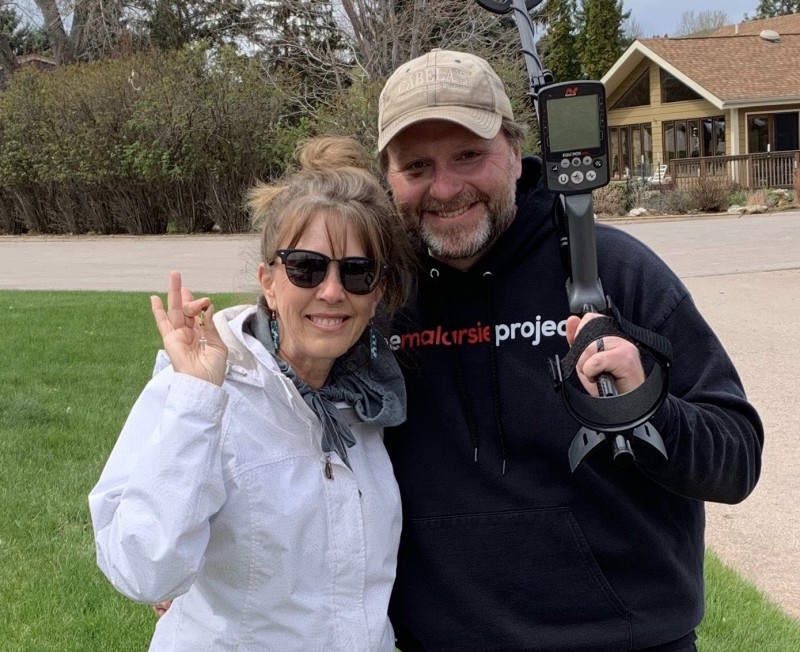

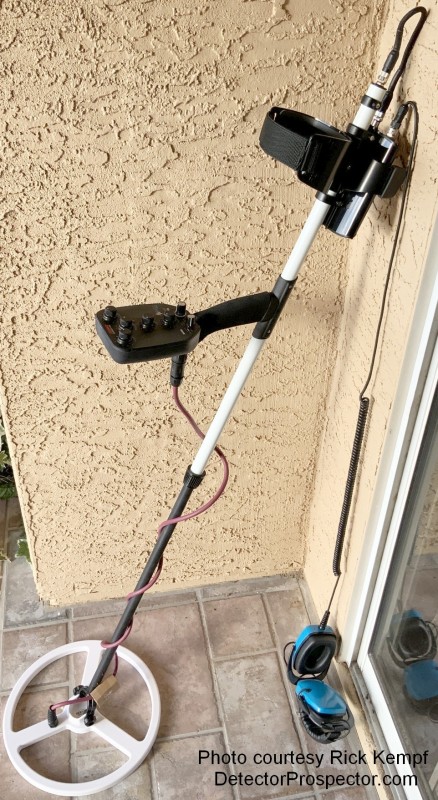



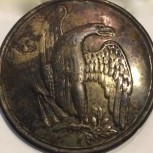
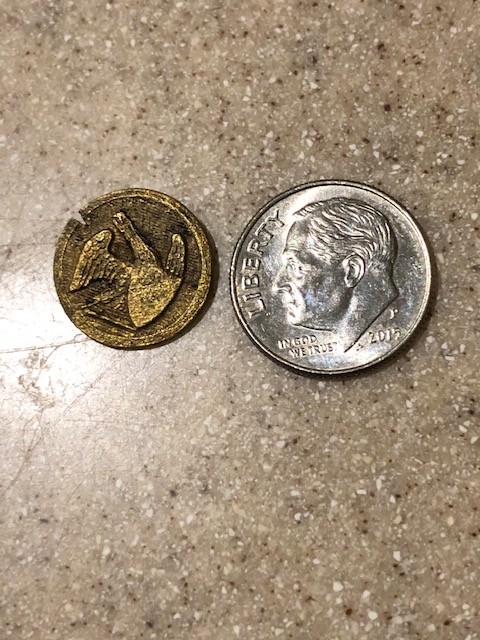
.thumb.jpg.d71314a45f3dc82bf75ac1b96e7e9201.jpg)
